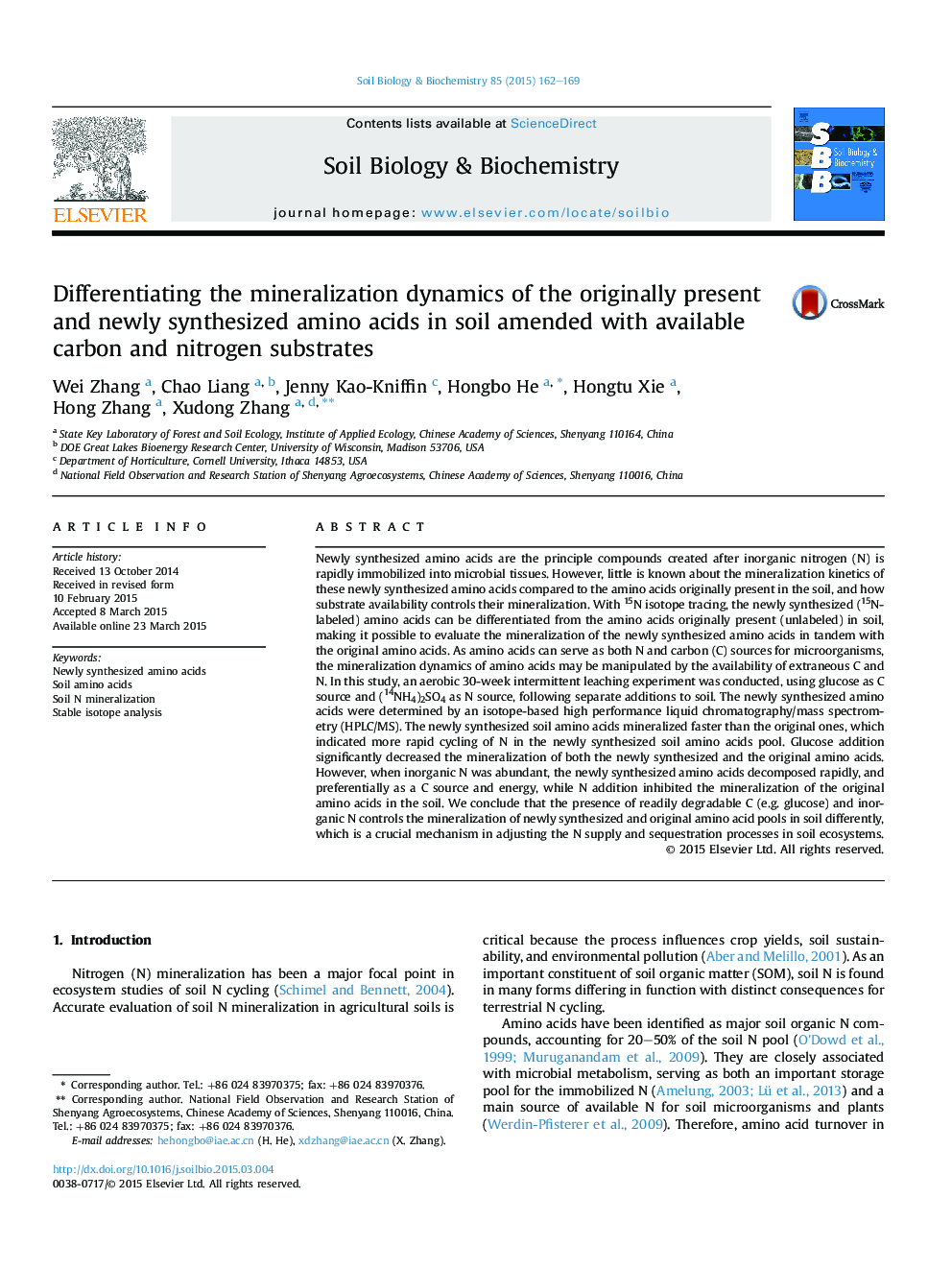| کد مقاله | کد نشریه | سال انتشار | مقاله انگلیسی | نسخه تمام متن |
|---|---|---|---|---|
| 8364217 | 1542599 | 2015 | 8 صفحه PDF | دانلود رایگان |
عنوان انگلیسی مقاله ISI
Differentiating the mineralization dynamics of the originally present and newly synthesized amino acids in soil amended with available carbon and nitrogen substrates
ترجمه فارسی عنوان
تمایز پویایی کانالیزاسیون اسیدهای آمینه موجود و به تازگی سنتز شده در خاک اصلاح شده با بستر کربن و نیتروژن موجود
دانلود مقاله + سفارش ترجمه
دانلود مقاله ISI انگلیسی
رایگان برای ایرانیان
موضوعات مرتبط
علوم زیستی و بیوفناوری
علوم کشاورزی و بیولوژیک
دانش خاک شناسی
چکیده انگلیسی
Newly synthesized amino acids are the principle compounds created after inorganic nitrogen (N) is rapidly immobilized into microbial tissues. However, little is known about the mineralization kinetics of these newly synthesized amino acids compared to the amino acids originally present in the soil, and how substrate availability controls their mineralization. With 15N isotope tracing, the newly synthesized (15N-labeled) amino acids can be differentiated from the amino acids originally present (unlabeled) in soil, making it possible to evaluate the mineralization of the newly synthesized amino acids in tandem with the original amino acids. As amino acids can serve as both N and carbon (C) sources for microorganisms, the mineralization dynamics of amino acids may be manipulated by the availability of extraneous C and N. In this study, an aerobic 30-week intermittent leaching experiment was conducted, using glucose as C source and (14NH4)2SO4 as N source, following separate additions to soil. The newly synthesized amino acids were determined by an isotope-based high performance liquid chromatography/mass spectrometry (HPLC/MS). The newly synthesized soil amino acids mineralized faster than the original ones, which indicated more rapid cycling of N in the newly synthesized soil amino acids pool. Glucose addition significantly decreased the mineralization of both the newly synthesized and the original amino acids. However, when inorganic N was abundant, the newly synthesized amino acids decomposed rapidly, and preferentially as a C source and energy, while N addition inhibited the mineralization of the original amino acids in the soil. We conclude that the presence of readily degradable C (e.g. glucose) and inorganic N controls the mineralization of newly synthesized and original amino acid pools in soil differently, which is a crucial mechanism in adjusting the N supply and sequestration processes in soil ecosystems.
ناشر
Database: Elsevier - ScienceDirect (ساینس دایرکت)
Journal: Soil Biology and Biochemistry - Volume 85, June 2015, Pages 162-169
Journal: Soil Biology and Biochemistry - Volume 85, June 2015, Pages 162-169
نویسندگان
Wei Zhang, Chao Liang, Jenny Kao-Kniffin, Hongbo He, Hongtu Xie, Hong Zhang, Xudong Zhang,
